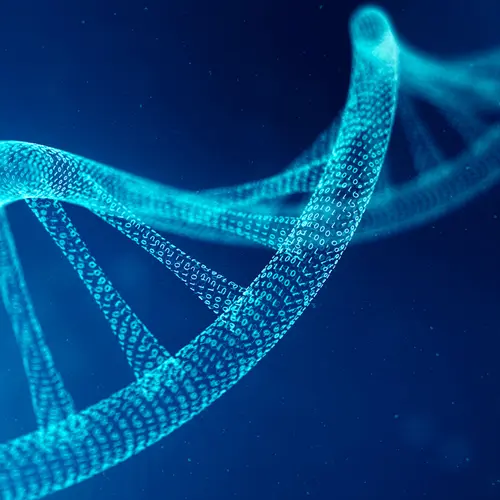This is a rare form of cancer that mainly happens in childhood. Doctors don’t know any way to prevent Rhabdomyosarcoma (RMS), but there are treatments.
The name rhabdomyosarcoma comes from the type of cells this cancer usually forms in called rhabdomyoblasts. These cells start to form when a human embryo is just a few weeks old. Later, they turn into tissues that make up the skeletal muscles -- the muscles you use to move your body.
Because rhabdomyoblasts are mainly found in developing embryos, the cancer is usually diagnosed in children. About 350 people are diagnosed with RMS every year in the United States. More than half of them are kids younger than 10. It’s very rare for it to be diagnosed in adults, but it can happen.
Types
There are three main types of RMS:
- Embryonal RMS is the most common. It usually happens in children 5 or younger. Tumors are often found in the head and neck area or around the bladder and genitals.
- Alveolar RMS can happen at any age. This type is usually found in large muscles of the trunk, arms, and legs. The tumors usually grow faster than the embryonal type, and they need more intense treatment.
- Anaplastic: This type rarely happens in children.
Who Gets It?
Doctors don’t know of any lifestyle habits or things in the environment that raise the risk of having or passing on RMS. If you have a child with RMS, the disease wasn’t caused by something you did or didn’t do.
Children who inherit certain genetic disorders from their parents are at higher risk. These include neurofibromatosis type 1 (NF1), Beckwith-Wiedemann syndrome, and Noonan syndrome. Babies who are born larger than expected may also have a higher risk. RMS is slightly more common in boys than in girls.
Symptoms and Diagnosis
Symptoms depend on where in the body the tumor is:
- Tumors in the muscles behind the eye can cause eye bulging, vision problems, and cross-eyes.
- Tumors in the ear or nasal cavity can cause earaches, headaches, congestion, or nosebleeds.
- Tumors that form in the urinary tract can make it hard to urinate or cause blood in a child’s urine.
- Tumors in a girl’s vagina can cause bloody discharge.
- Tumors in the abdomen can cause vomiting, pain, or constipation.
- Tumors in the neck, chest, arms, legs, back, or groin can cause lumps or swelling. These lumps can grow from the size of a mosquito bite to the size of a grapefruit in just a few weeks.
Many of these symptoms can be caused by other less serious conditions. But if your child has one of these symptoms that can’t be explained -- like a bump that doesn’t go away or gets bigger -- you should get it checked by a doctor.
If a doctor thinks a child’s symptoms may be caused by cancer, they’ll order tests that show pictures of inside the body:
- X-rays: Doctors use electromagnetic waves to make images of your child’s tissue.
- MRI (magnetic resonance imaging): Powerful magnets and radio waves make detailed images.
- CT scan (computerized tomography): Several X-rays taken from different angles are put together to show more information.
- Ultrasound: Sound waves are used to make images of the body.
- Bone scan: Radioactive material is put into a vein to show areas where there may be cancer.
If these tests show that your child has a tumor, a surgeon will do a biopsy of the area. They’ll make a small cut or use a needle to collect a tiny sample of cells. Then they’ll look at these cells under a microscope to see if they’re cancerous.
Treatment
If your child’s tumor is cancerous, they may have surgery to remove all or most of it. How complicated the surgery is depends on where the tumor is in the body.
Your child may also have chemotherapy to kill cancer cells that may be missed during surgery. For RMS, chemotherapy drugs are usually given for six months to a year -- once a week at first, then less often.
These drugs are very good at killing cancer cells, but they also can kill other healthy cells and can cause hair loss, nausea and vomiting, fatigue, and other unpleasant reactions. Most of these side effects are temporary, and children tend to handle chemotherapy better than adults.
If tests show that part of a tumor is still in the body after surgery and chemotherapy, your child may have radiation to try to shrink or destroy it. Radiation uses powerful X-rays to kill cancer cells. It’s usually given 5 days a week over several weeks.
Radiation can also cause side effects, both right away and years later. Discuss these risks with your child’s doctor before radiation begins.
If the tumor is in a hard-to-reach spot or it overlaps with important organs, it’s more difficult for doctors to take out all the cancer cells without damaging healthy tissue. If this is the case, your child’s treatment may not start with surgery.
If surgery seems too difficult or risky, your child may have chemotherapy or radiation first to try to shrink the tumor. This can make it easier for surgeons to go in later to remove it.
What to Expect
If it’s caught early and hasn’t spread to other parts of your child’s body, doctors can usually get rid of the cancer. Children between 1 and 9 years old have an especially good outcome.
Sometimes, though, the cancer can come back. When it does, it usually happens in the first few years after treatment. That’s why children treated for RMS need to have regular follow-up appointments with their doctors for several years.
These checkups can include physical exams, blood tests, and imaging scans to check for signs that their disease has returned.
Doctors will also watch for and treat long-term side effects of chemotherapy and radiation.

